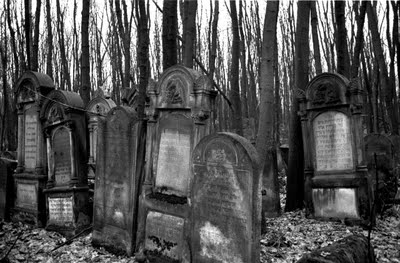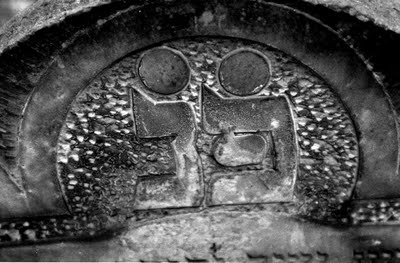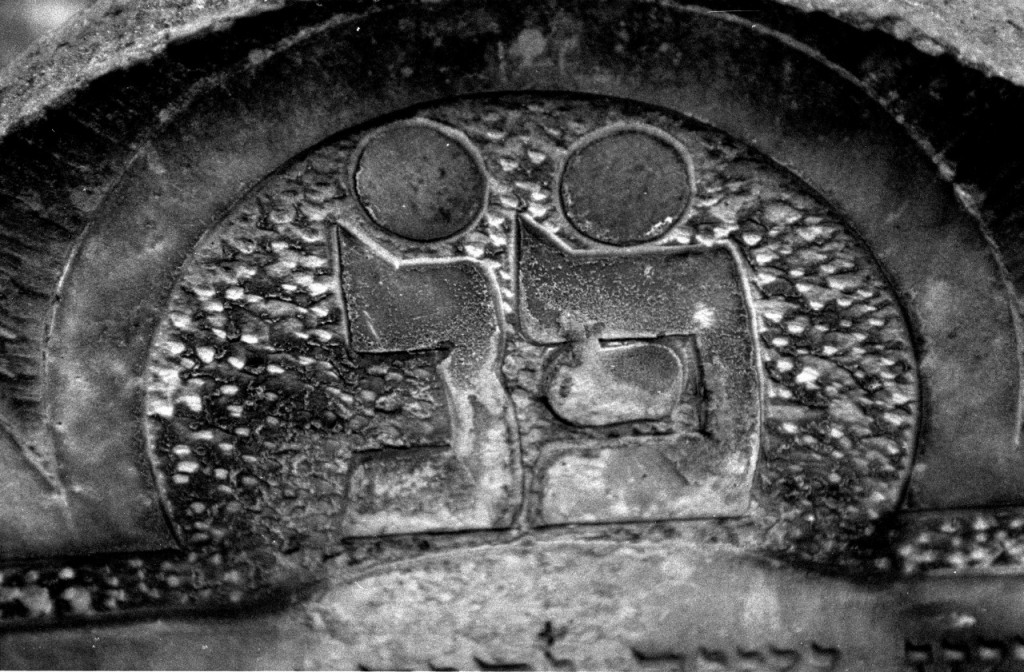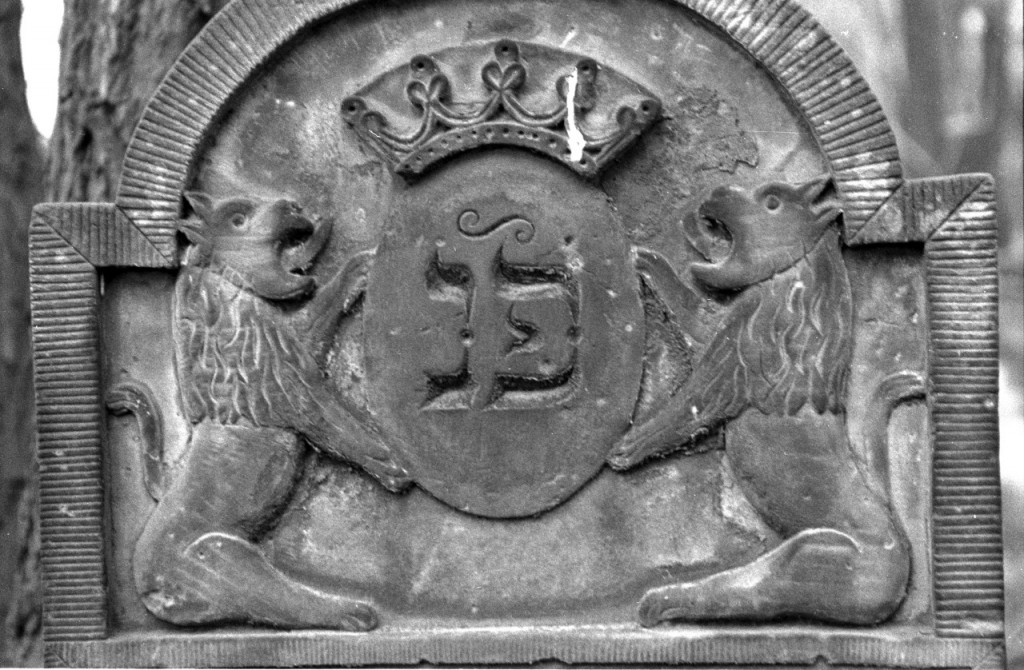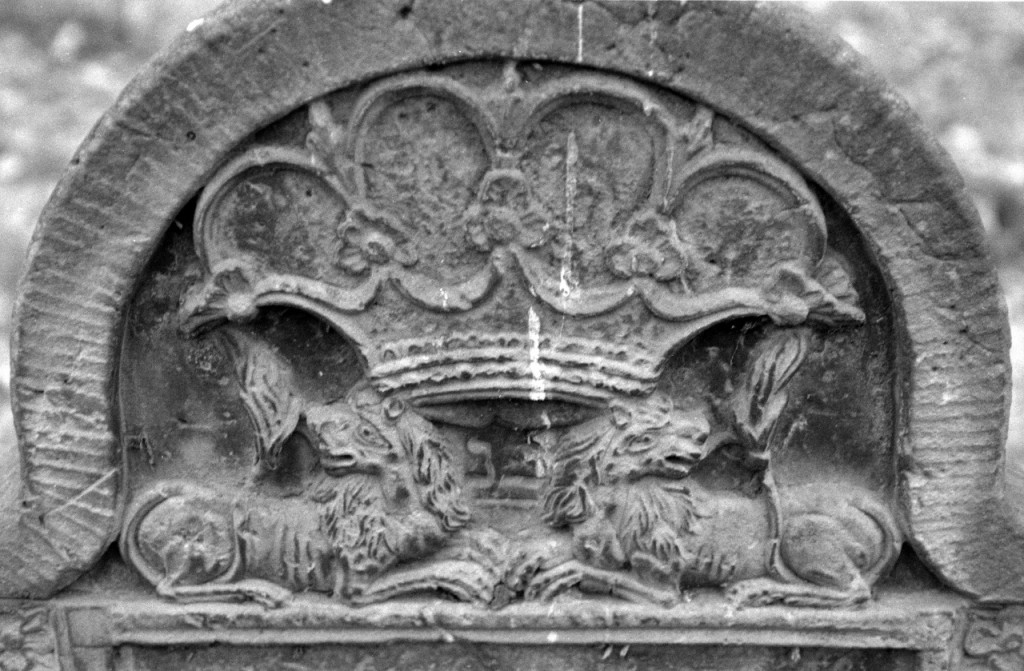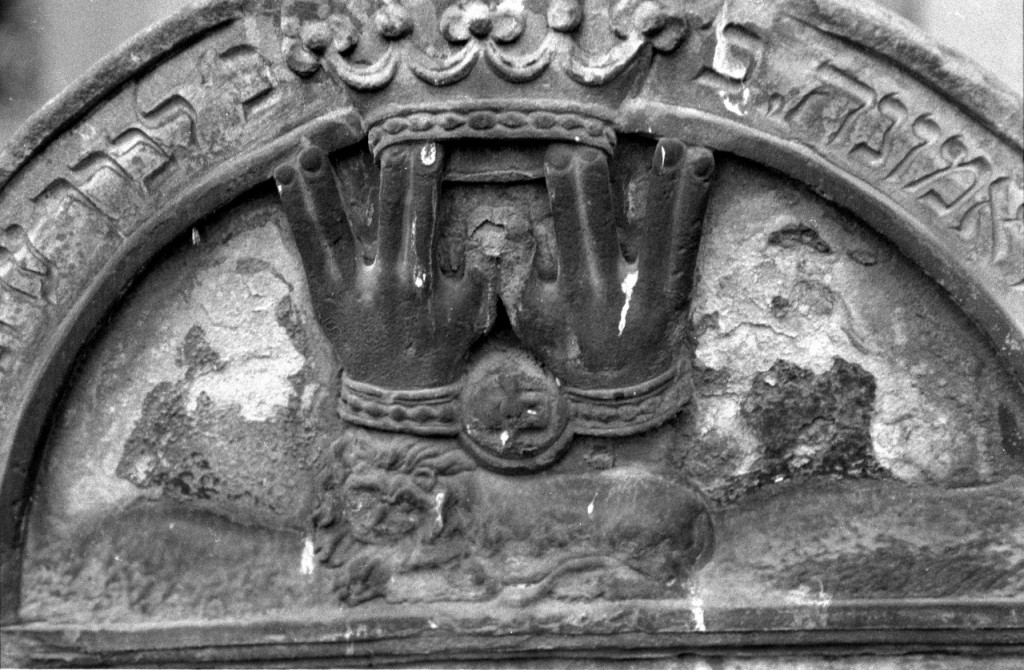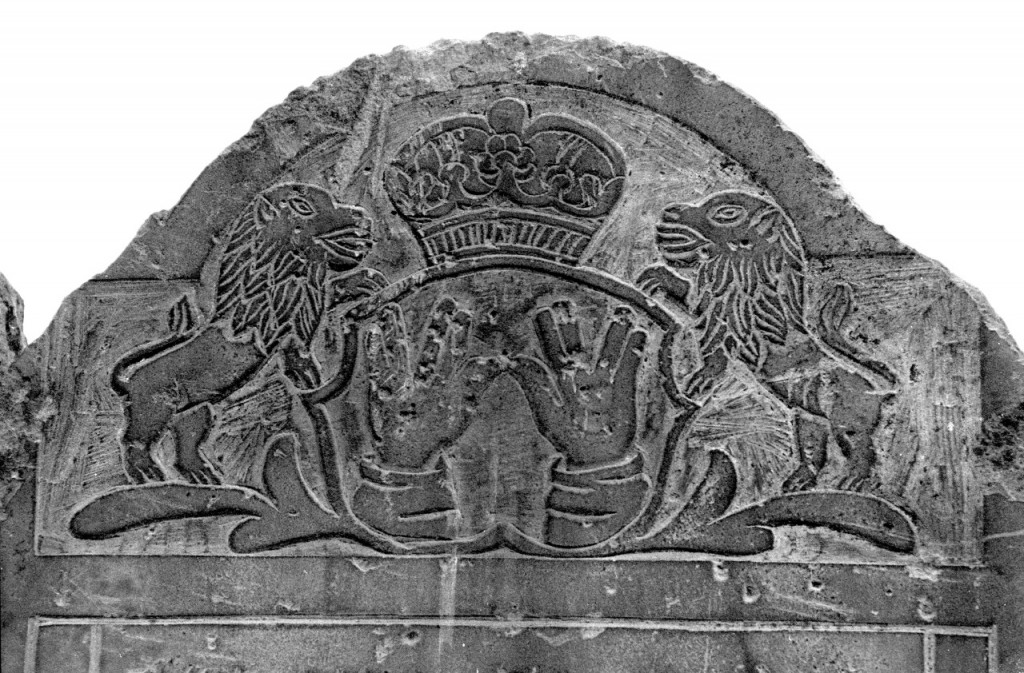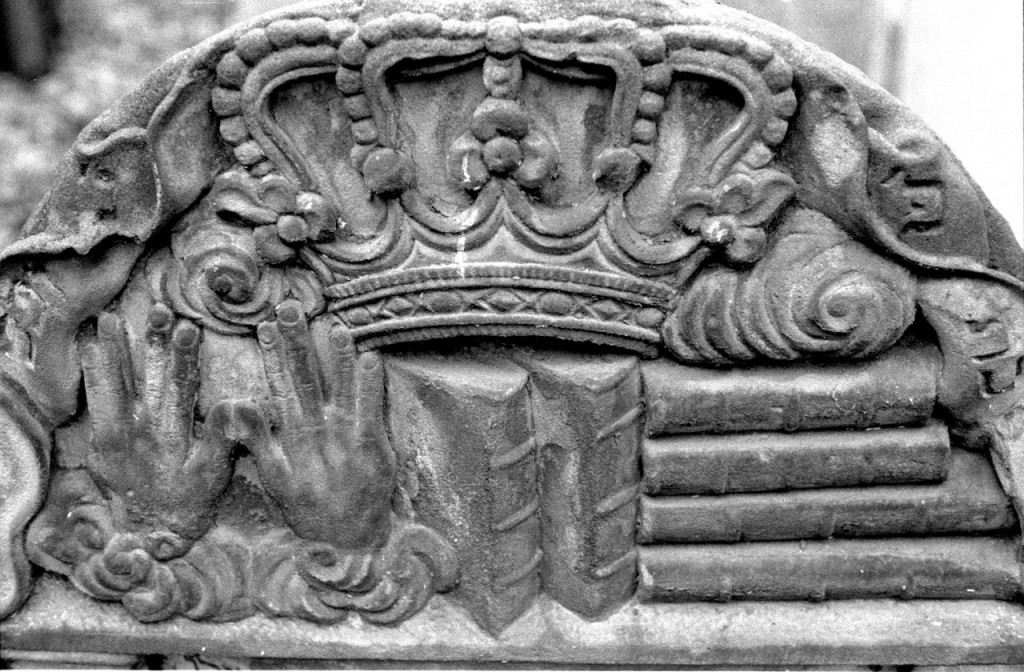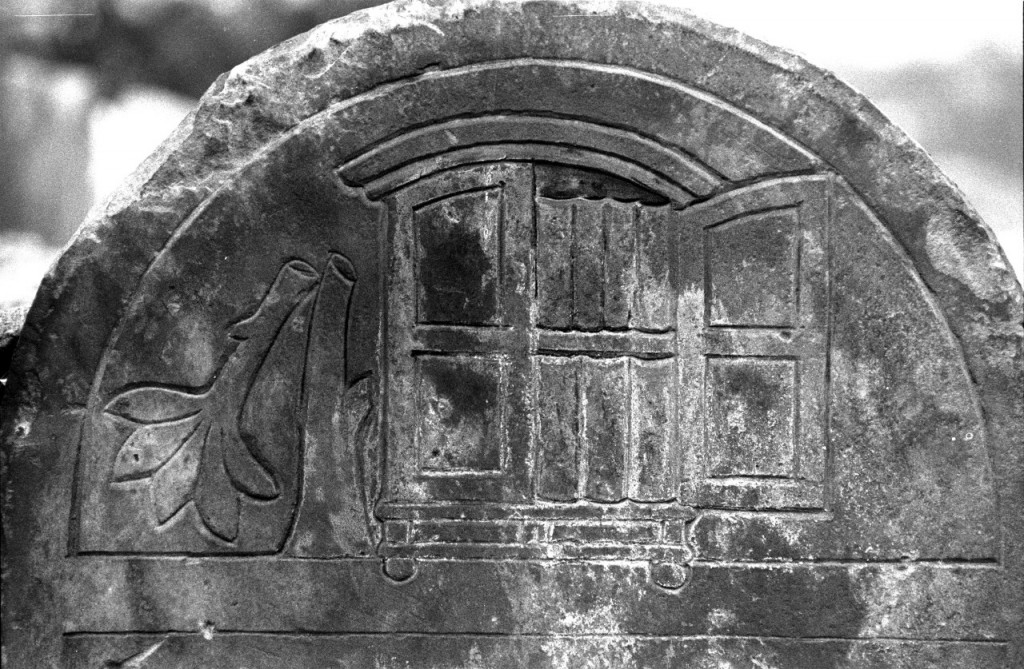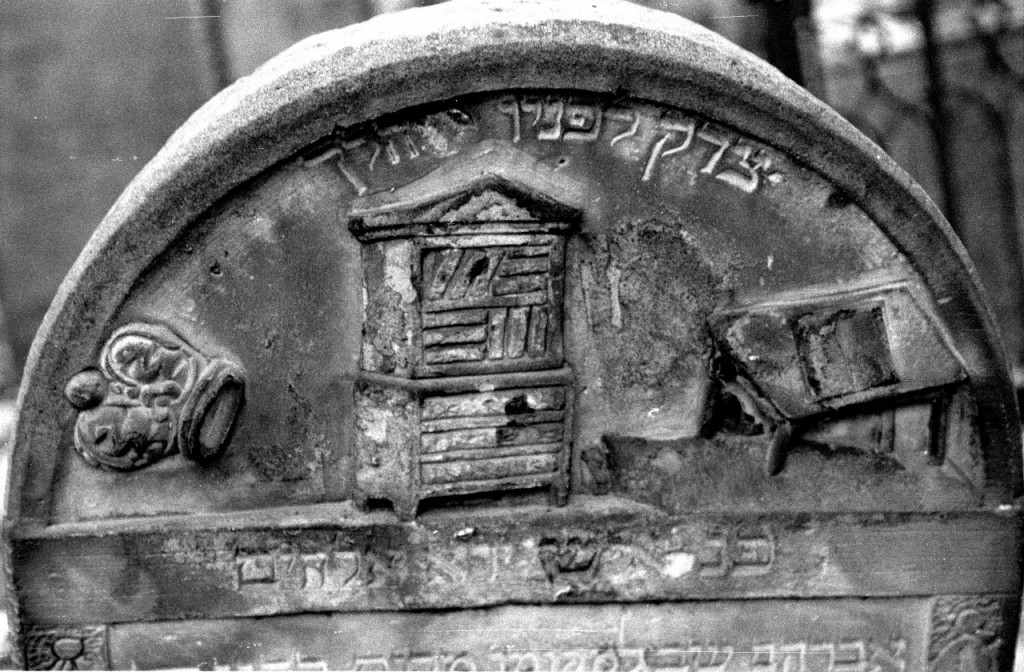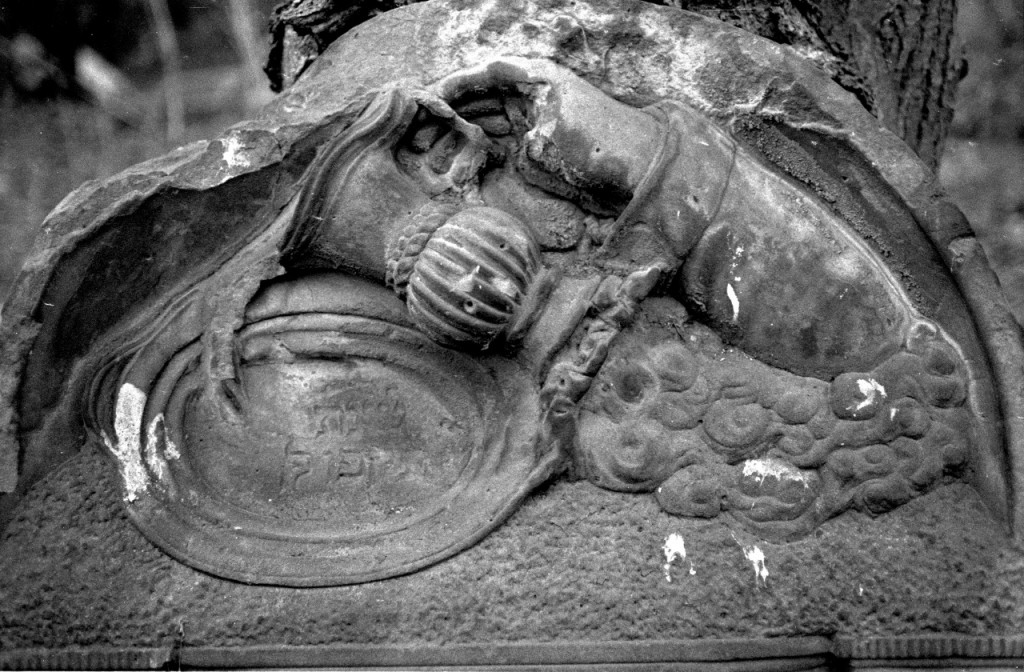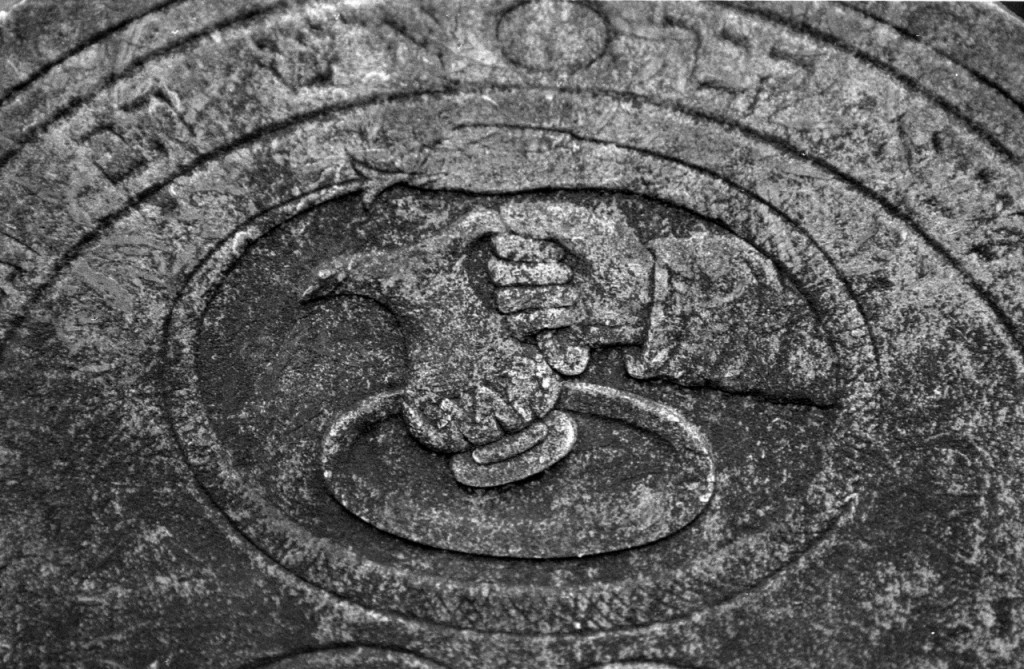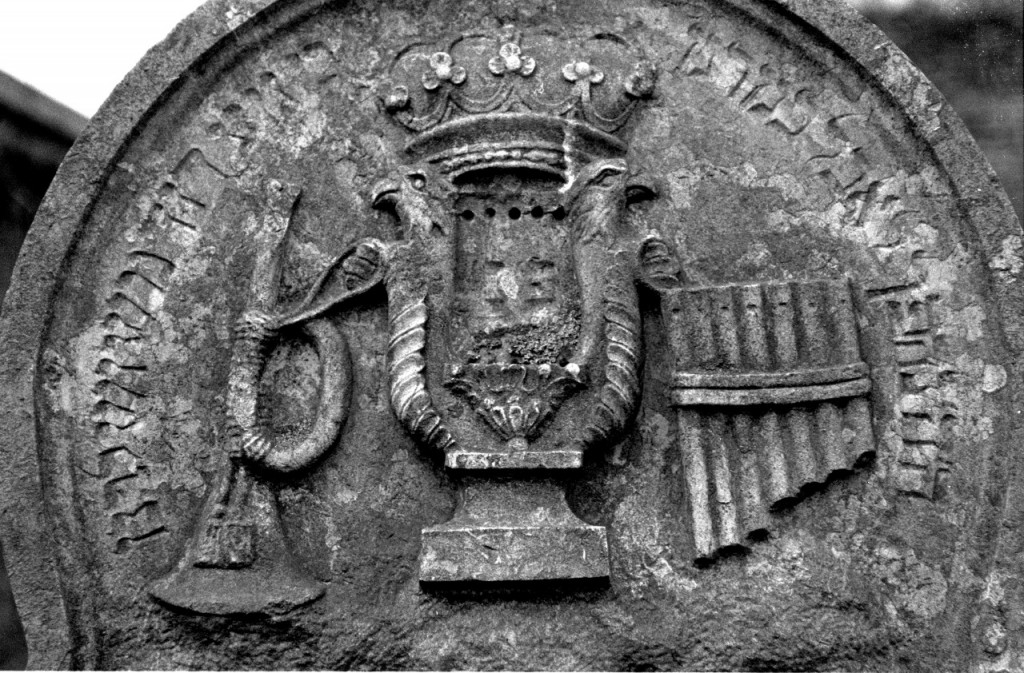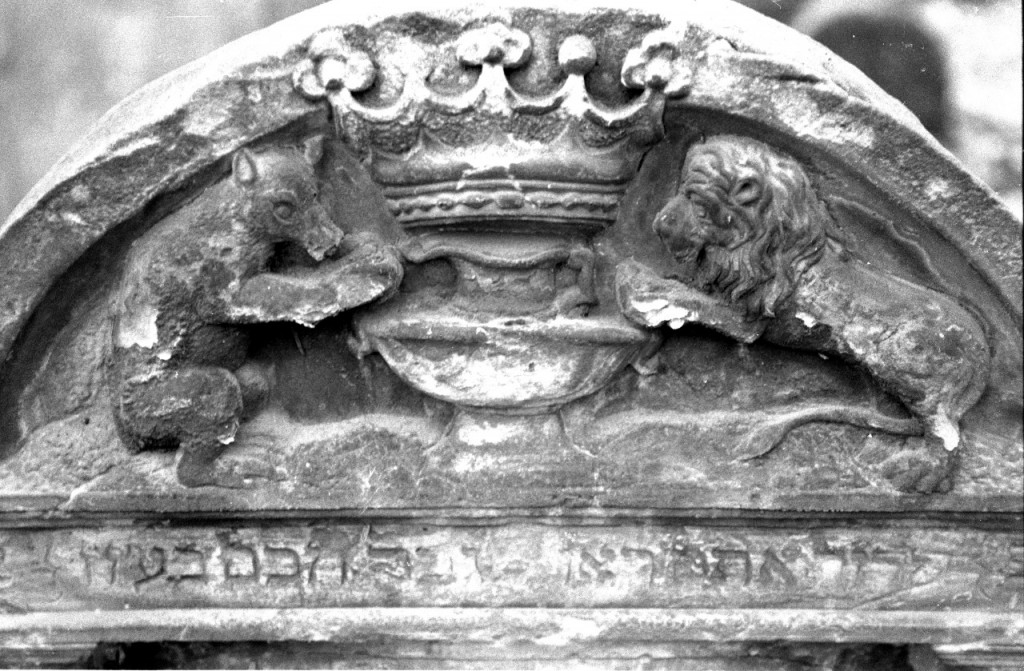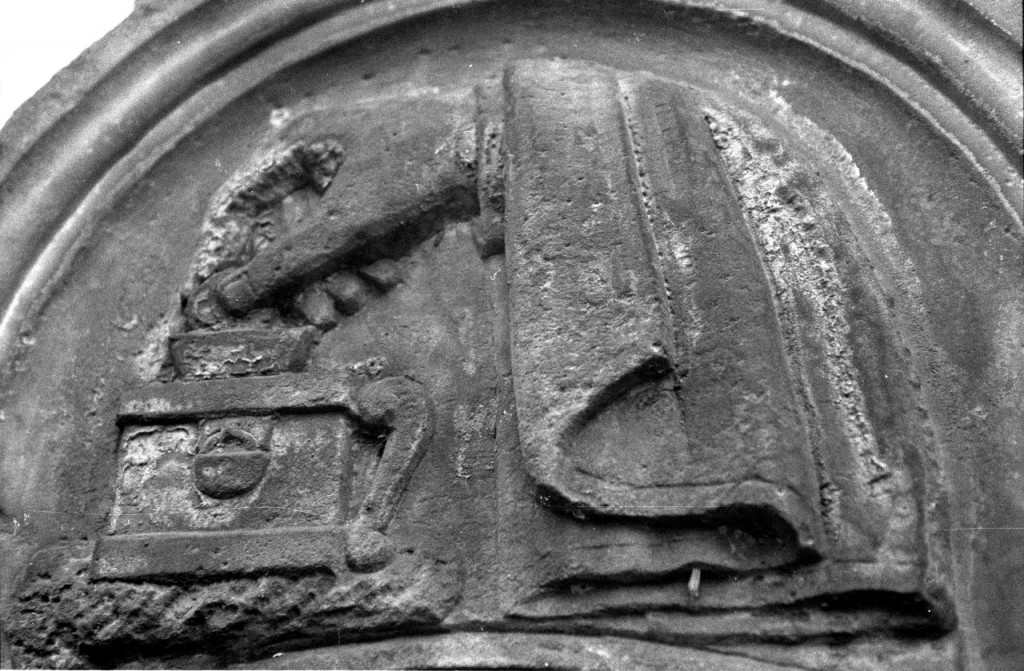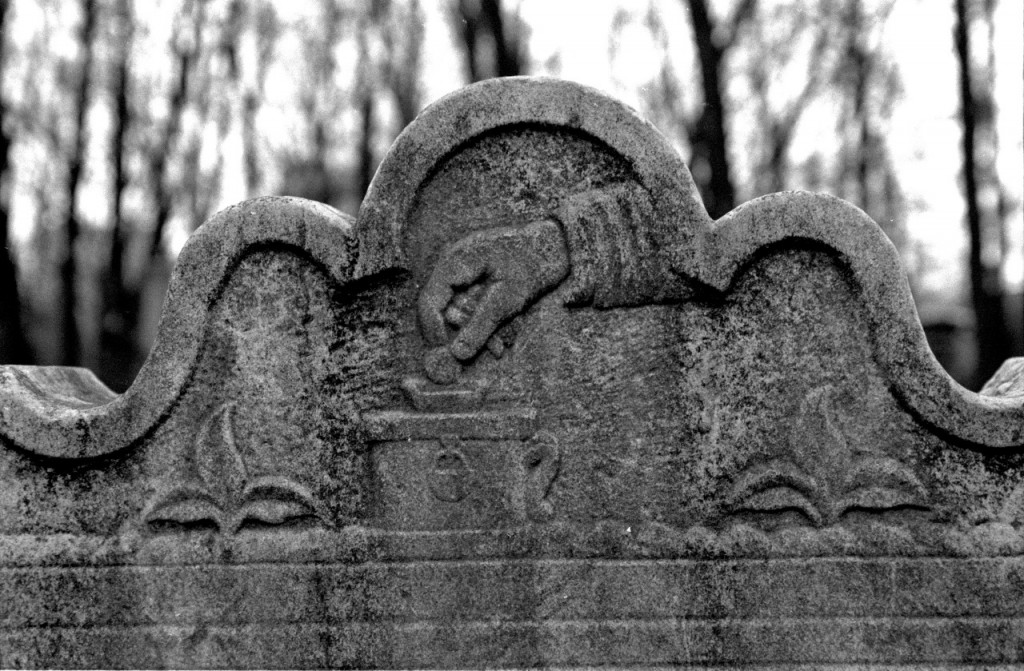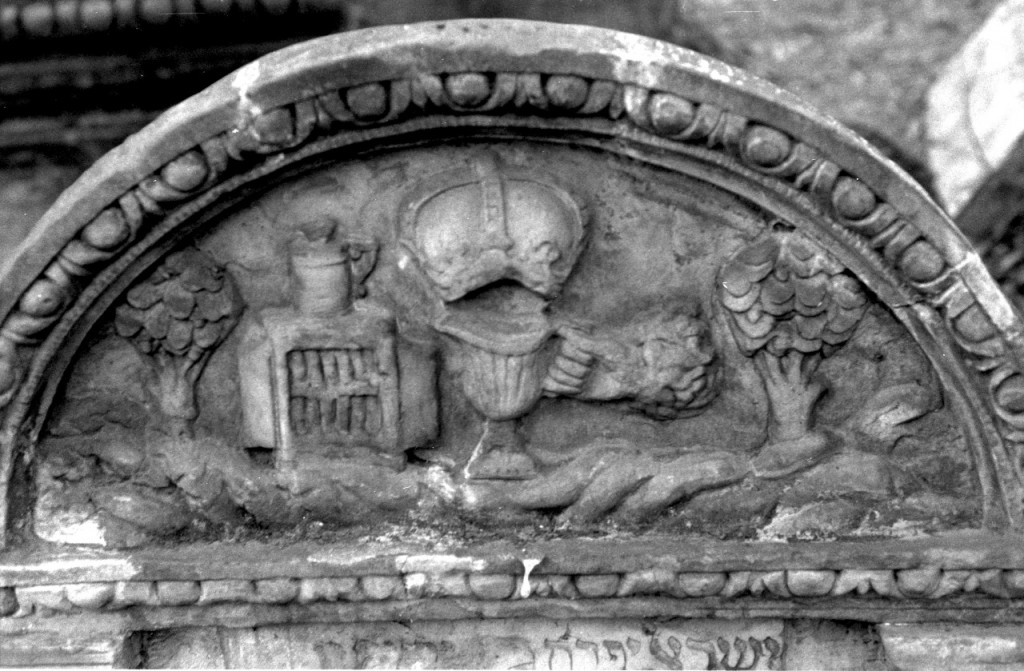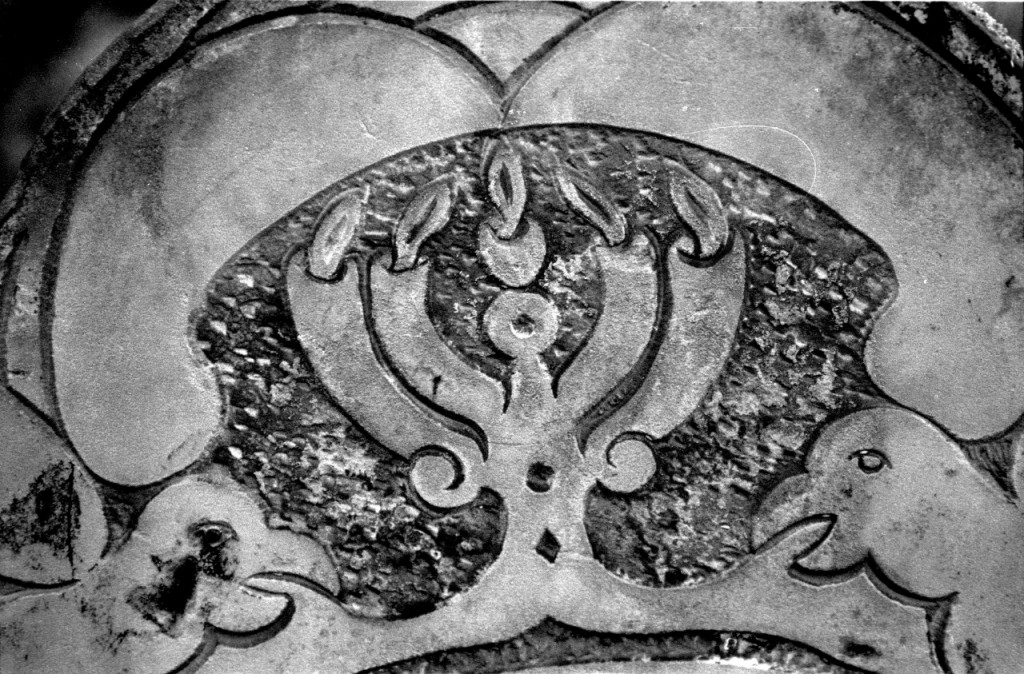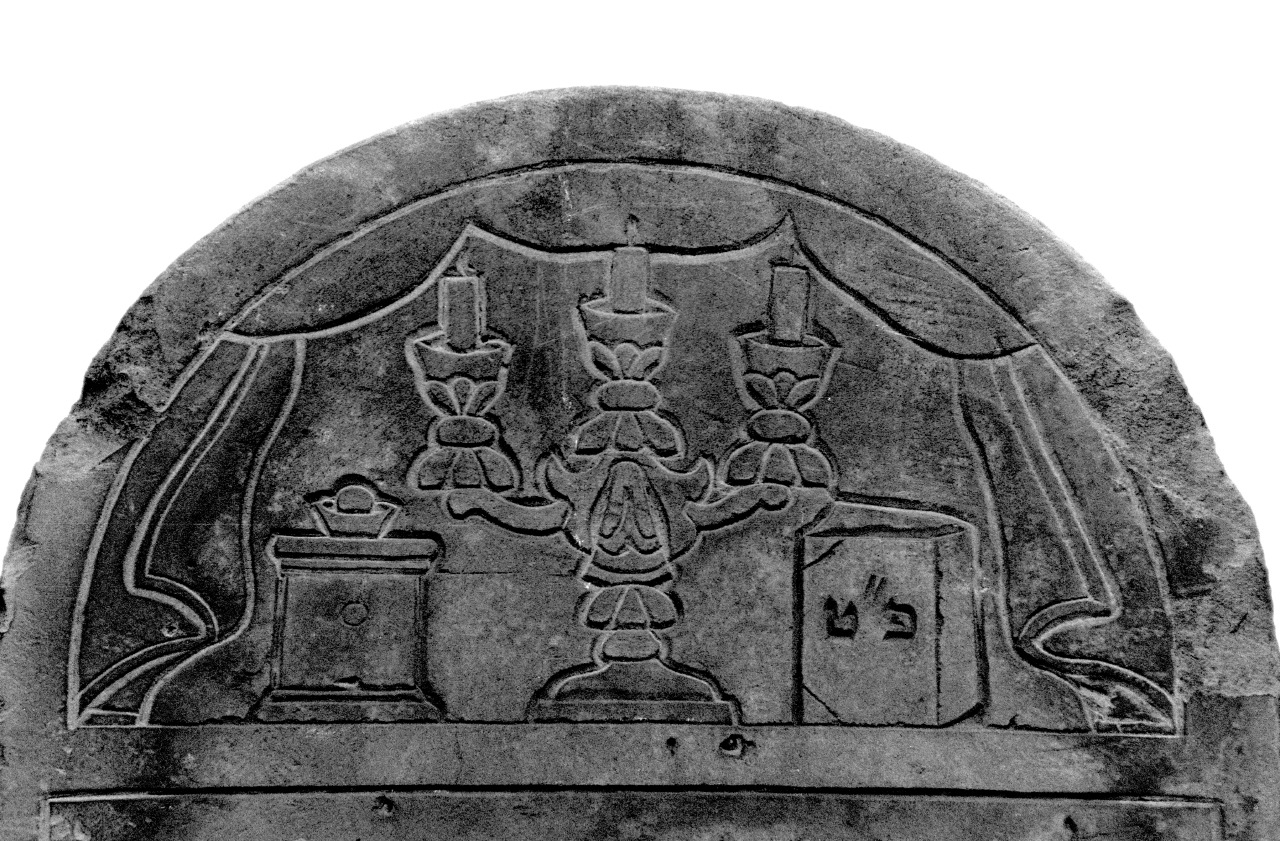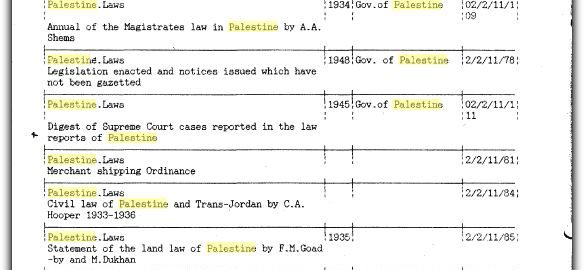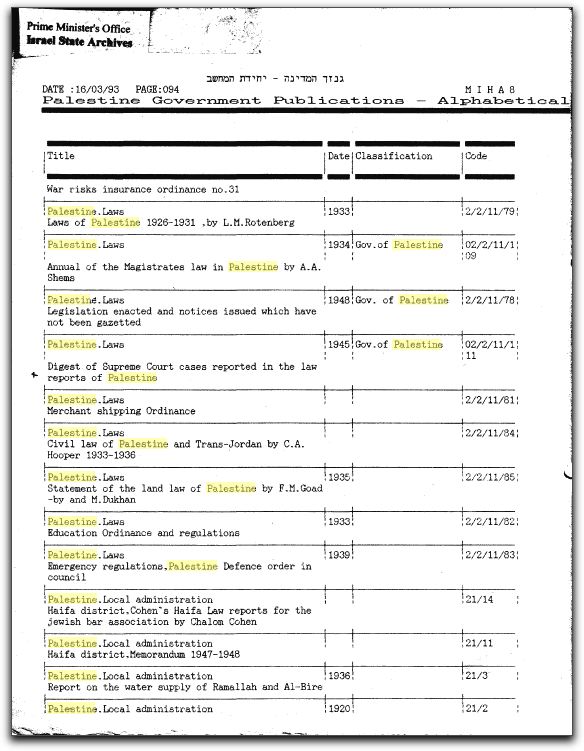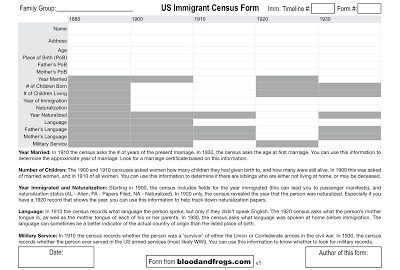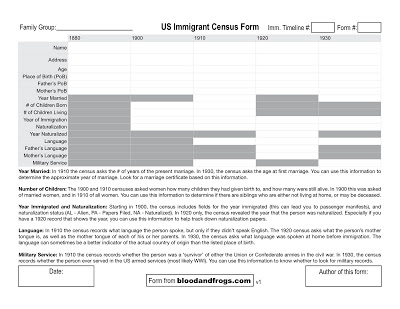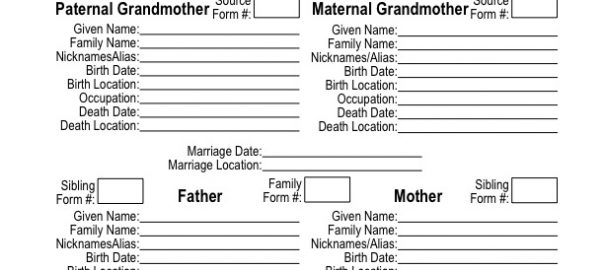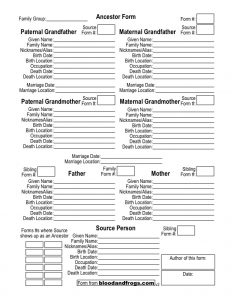This is a post about the symbols found on Jewish gravestones. There is very little here for explaining how to interpret the Hebrew text of a Jewish gravestone, although I will likely write about that at a later date.
I’ve tried a few times to finish a post in time for one of the GeneaBloggers ‘daily blogger prompts’ which in general I think is a great way to spur bloggers on and get people posting on varied topics. That said, however, I’ve never actually finished a post by the day in question and I never want to wait until the following week to post something I’ve spent so much time on. Yesterday was ‘Tombstone Tuesday’ (as well as ‘Talented Tuesday’ and ‘Tech Tuesday’) but I couldn’t finish this post by then, mainly because I had to scan all the photos.
Images on Jewish gravestones were not always the norm, and are not as common today as they were in the past, so really what I’m going to show is something you would find on graves that are from 19th and early 20th century. Some of these images still appear on modern graves, but usually in far less elaborate forms.
For examples, I’m using photos I took 18 years ago in Poland. Most of these photos are from the Jewish cemetery in Warsaw, although I believe a few are from other locations in Poland. The 18 year time-frame is a bit ironic, being that 18 is the numerical equivalent of the Hebrew word Chai (חי), which means life (the two letters that make up the Hebrew word Chai (חי) are Chet (ח) and Yud (י), which are the 8th and 10th letter respectively in the Hebrew alphabet, and thus add up to 18). This is why the number 18 is generally considered lucky by Jews.
All of the photos are of the top of the gravestone only. I did not photograph the text on the main section of the gravestone which would identify who the grave belongs to, as that was not my intention at the time. These same graves are probably photographed and in on-line databases somewhere, but you would need to do a lot of searching to find them as I do not know the names of the people from whose gravestones these originated.
I’m going to keep this article a little bit more loose than my usual posting, as this topic is a bit more open to interpretation than most. I welcome peoples comments on the photos. I don’t know the meaning of all the symbols shown, and if you do please add your comments. Some symbols would be much easier to interpret if we had the full text of the gravestone to read, as some are linked to the name of the person who was deceased. For the purpose of this posting we can just guess.
I’ll start with an image which is not a symbol at all, but an acronym. The letters Peh Nun (פנ), sometimes with an quote in between (פ”נ), show up frequently on Jewish gravestones. These letters represent either the phrase ‘Po Nikbar’ or ‘Po Nitman’ both which simply mean ‘Here Lies’. A variation that is sometimes seen is Peh Tet (פ”ט) which represents the phrase ‘Po Tamun’ which means ‘Here is Hidden’.
1) This image is simply a large graphic of the letters Peh Nun (פנ). Although the circles above each letter most likely have some symbolism, I’m not aware of what that is exactly. It could be the general ‘circle of life’ type of symbolism, but I don’t know for sure.
2) The following two photos again shows the Peh Nun lettering in the middle, but introduces two more symbols, that of the crown and two lions. Both the crown and lions are symbols linked to royalty, although in this case the link is probably more symbolic. They are meant to show honor for the deceased. The crown can also represent the head of a household.
Lions are sometimes also used when the person who died had a name linked to lions, such as Yehuda (Yehuda in Hebrew, Judah in English, the tribe of Israelites which were considered leaders, and the tribe from which King David descended), or the word Lion in various languages: Ari or Aryeh (Hebrew), Ariel (Hebrew for ‘Lion of God’), Leib (Yiddish), Leon (French) or Loeb (German).
3) In the following two photos, you can see the crown and the lion again. The center of the images, however, are two hands with thumbs touching and fingers paired and split. For those unfamiliar with Jewish tradition, this is how Cohanim (Hebrew plural of Cohen), those of the Jewish priesthood (descended from Aaron, the brother of Moses), hold their hands when bestowing a blessing during prayer.
As an aside, you might actually recognize this as the hand gesture used as a form of greeting by Vulcans in Star Trek. The reason this is the case is that Leonard Nimoy, who is Jewish, played the first Vulcan character Spock on the TV show and he created this greeting based on the hand gesture used by Cohanim.
This is a very common symbol on gravestones of Cohanim, and indeed you can still find some form of this on modern gravestones as well.
4) In this next photo there is the familiar crown, as well as the hands of the Cohanim, but also a stack of books. A common symbol on Jewish gravestones, books refer to scholarship. Sometimes the books have specific meaning, based on the number. If there are five books, it can mean the person was very knowledgeable about the Written Torah (the Five Books of Moses) and if there are six books (as there are in this case) it can mean that they were also knowledgeable in the Oral Torah (represented by the Mishnah which has six volumes).
5) In this photo you see a bookcase, again representing scholarship, but a tree that is broken. The broken tree represents someone who has died young.
6) In the following photo you see the bookcase, as well as the book on a table. To the left is a fallen crown. This particular symbol of the fallen crown usually means the person who died was the head of a family.
7) Of the original twelve tribes of Israel, based on the twelve sons of Jacob, the tribe of Levi was the tribe that dealt primarily with religious functions. Both Cohanim and Levis had part in the functioning of the Temple in Jerusalem. While Cohanim were the priests, the Levis assisted the Cohanim and were known as musicians and singers in the Temple. The Levis would sing a different Psalm each day in the Temple.
Moses and Aaron were both from the tribe of Levi, and the Cohanim, descendant from Aaron, are a sub-group of the tribe of Levi. Like Cohanim, other members of the tribe of Levi also have a tradition of keeping track of their tribal affiliation. While the tribal associations of most Jews have been lost to time, the Cohanim and Levis have traditionally kept track of this affiliation. Thus, like Cohanim, Levis have also decorated their gravestones with symbols representing their Levi heritage. The most common symbol for Levis is a hand pouring water into a basin, as the Levis would wash the hands of the Cohanim before they performed their priestly duties (and still do today).
Note in the second picture above the snake eating its tail surrounding the Levi symbol. The snake eating its tail is not a specifically Jewish symbol, but represents the cycle of life. It can also refer to infinity, and thus perhaps the belief in life beyond death.
8) As the Levis were musicians it is also common to find musical instruments on the gravestones of Levis, although of course musical instruments could also signify that the person was actually a musician. Note also the crown and the two birds facing in different directions. In the center are the letters Peh Nun (פנ).
9) As mentioned, certain animals are used to represent the names of the people who were buried. A lion may refer to a man named Aryeh. A bird could refer to a woman named Tziporah or Faiga. In the following image there is a lion and a wolf. As we cannot see the name on the gravestone we can only guess, but the wolf may refer to someone named Benjamin. Benjamin was one of the 12 sons of Jacob and he is frequently associated with the wolf. Wolf (pronounced vulf) was also a common Yiddish name.
Note in this image also the crown as well as the pitcher in a basin, referring to a Levi.
10) Another common symbol on Jewish gravestones is the charity box. Sometimes this is represented by a hand putting money into the charity box. This symbol is meant to show that the person was charitable and helped people.
11) The following image is a barrage of symbols. In the center is a hand holding a pitcher, a symbol of a Levi. Above it is crown. Next to it is a bookcase, symbolizing scholarship. Above the bookcase is a charity box, showing he was charitable. All of that is flanked by two trees. Trees generally refer to life, although two trees in this context may refer to the two trees explicitly mentioned in Genesis that were in the Garden of Eden, the Tree of Life and the Tree of the Knowledge of Good and Evil. In Jewish tradition the Garden of Eden is essentially Heaven.
12) The Menora, or seven-branched candelabra, is an ancient Jewish symbol representing the menora that stood in the Temple in Jerusalem. A nine-candle version of the menora is used on Hanukah each year by Jews worldwide. Candles are also lit every Friday night by religious Jewish women, and thus candles and candelabras are associated with women. On Jewish gravestones candlesticks and candelabras are usually associated with women.
In the following photo there is a five-branch candelabra and two birds. Birds in many cultures are associated with the soul, or the departing of ones soul. Birds may also refer to the name of the woman, if her name was Tziporah (in Hebrew) or Feiga (in Yiddish).
If you look at enough of these graves you may notice that pairs of birds show up in many of them. I’m not sure of the specific symbolism, if any, of two birds, but it’s likely that there is something specific to there being two birds.
13) This next image integrates a candelabra representing a woman, a charity box on the left showing she was charitable, and a book with the letters Peh Tet (פ”ט) which as mentioned earlier is an less-common acronym meaning ‘Here is Hidden’.
14) Like the broken tree which indicated a man that had died young in an earlier image, a woman that died young often has broken candles on a candelabra.
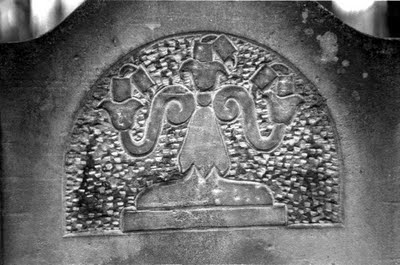
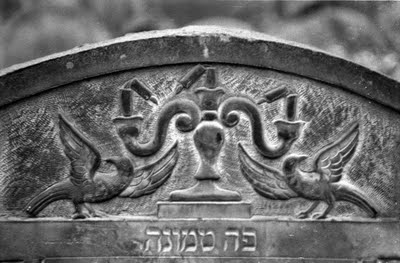
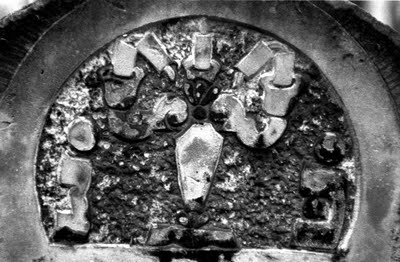
15) This image is centered on the broken candle image like the above, but also has two hands. It’s not uncommon to see two hands in an image of candles, as women making the blessing on candles on Friday nights life their hands up when making the blessing. Note however that one hand is closed. The closed hand looks the same as the hands shown giving charity in other images. Even without a charity box, perhaps it represents charity?
[Rabbi Jay Goldmitz, headmaster of the Ramaz Upper School in NY, writes that the clasped hand probably refers to a line from Chapter 31 of Proverbs that refers to a Woman of Valor (Eishet Chayil): “She sends out her hand to the poor….” and thus would indeed be a reference to her being charitable.]
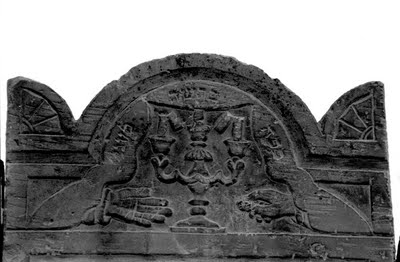
Here are a few interesting gravestones:
16) The symbols here include two lions with their tongues out. Actually I didn’t point out that the tongues were out in the image two. If someone knows the significance of the tongues being out, please share in the comments. The snake eating his tale is in this image as well. Inside the snake is the word Mavet (מות) which means Death. Above that is an hourglass with wings, a symbol that life is fleeting.
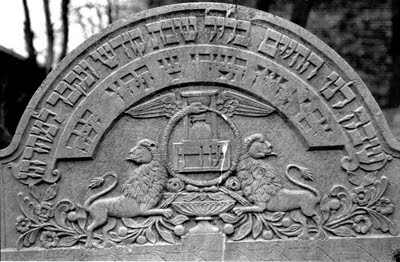
17) When I first looked at this image on the original negative I couldn’t figure out what it was (it had been 18 years since I took the photo). After I scanned the image I realized it was eight sheep. It seems the eight sheep are coming out of the building on the right and drinking from a well. Does the well represent the person who died? Did he have eight children? I don’t know, but the imagery is fascinating.
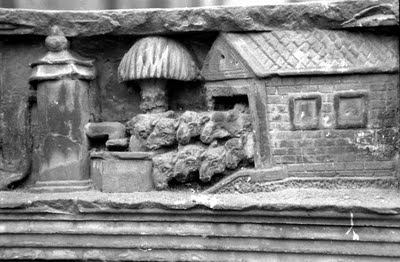
18) This last image is one of the more bizarre. A lion with the tail of a fish wearing a crown. The legs may also be from a different animal. There is actually a mythical beast called a Sea Lion that fits this description. In general mythical beasts such as this can be interpreted as a reference to the Time to Come, after the coming of the Messiah. The crown would seem to lend some credence to this idea, as the Messiah is considered to be a King. The image could also be a reference to the Leviathan, a mythical creature mentioned in Job. In Jewish mythology the Leviathan will be served in a grand feast to the righteous in the Time to Come, which will happen after the coming of the Messiah.
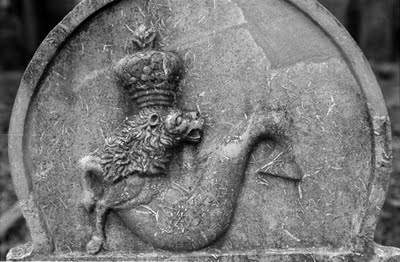
You may have noticed the one symbol I didn’t include was the Star of David. While it is a symbol, it’s not particularly symbolic. Yes finding it on a grave would presumably mean that the person was Jewish, but it’s not nearly as interesting a symbol as the above mentioned symbols. Also, putting the Star of David on a grave is actually a more recent practice. I did have one image of a Star of David on a grave from Poland, but it was certainly more rare than these other images.
To end, I wanted to include one image of what the graveyard that most of these images came from looked like at the time.
